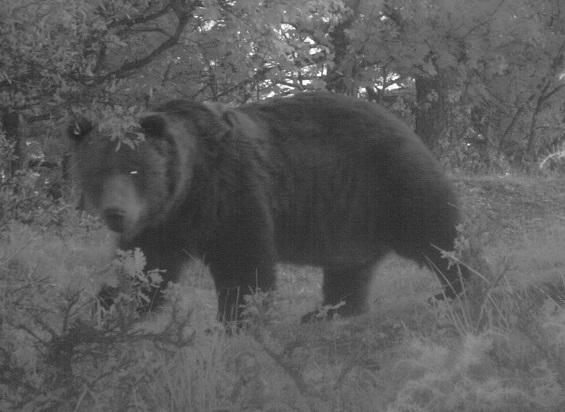Discussion

Relative abundance
Bear relative abundance increased when distance to forest was shorter and was found to be higher for the camera sites located inside Natura 2000 areas. The grid cells where the planned wind turbines are located have comparably high relative abundance estimations when compared with the surrounding areas. The results of the relative abundance analysis suggest that the study area is of high significance for brown bears, a priority species that is particularly sensitive to human disturbance.
Circadian activity
Bear circadian activity was estimated mostly nocturnal and crepuscular, whilst human activity was largely diurnal, indicating that bears might have changed their circadian activity patterns because of human disturbance or activity in the area. Bears in other studies were found to be mostly diurnal or crepuscular in areas undisturbed by human activity. Thus, this temporal change in brown bear circadian activity suggests that there might be a negative impact of human disturbance on brown bears which might be aggravated by the construction of infrastructure such as wind farms. Nonetheless, this temporal separation might be an important requirement for the coexistence of brown bears and humans, especially in areas with increasing human-bear conflicts such as the study area.
Habitat selection
The majority of the planned wind turbines are located on natural shrublands at altitudes ranging from 1510 m to 2220 m and surrounded by mixed and broad-leaved forests. The habitat selection analysis of elemetry data from 14 bears showed that they mostly preferred broad-leaved forests, mixed forests, heterogenous agricultural areas and shrublands.
Habitat suitability
The approach followed in this study suggests a framework for mapping brown bear habitat suitability, based on anthropogenic and environmental variables, and telemetry data. Habitat suitability was only analysed for the study area, which is located in medium to high altitudes and away from cities, meaning that the study area is a suitable area for brown bears to begin with. The habitat suitability map showed that 13 of the planned wind turbines are located inside highly suitable areas, nine are located inside moderately suitable areas and nine in low suitable areas.
Responsible for this page:
Director of undergraduate studies Biology
Last updated:
05/17/21
